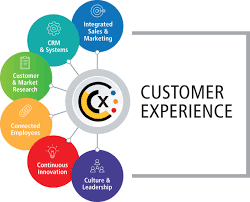When a company first enters the market, its goal is to expand its client base and capacity to provide the finest products and services to its customers. However, this has never been a sprint, but rather a marathon.
Such business expansions necessitate a significant investment in terms of funds, human capital, and, most crucially, a business expansion strategy. As a result, businesses use a variety of techniques to differentiate themselves from their competitors in the market. On a high level, they can be divided into two categories: horizontal and vertical integration. Let’s delve deeper and learn more about the horizontal integration strategy from the examples of the companies utilizing it.
What is Horizontal Integration?
Horizontal integration is a competitive strategy in which company entities operating at the value chain level and within the same industry unite to increase products and services output. The ultimate gain from horizontal integration is increased market power with low loss from not being integrated.
Vertical integration, in which a corporation controls its supply chain and value by owning its suppliers, distributors, or retail outlets, contrasts with horizontal integration.
What Is the Process of Horizontal Integration?
Horizontal integration is a competitive strategy that can lead to economies of scale, a competitive advantage, higher market share, and business growth. Strategic alliances aim for outcomes that increase resources, market, competence, and efficiency. The two combined organizations should be in a better position to generate more money than they would have if they had operated independently.
Horizontal integration may also include the optimization or consolidation of strategic business activities within the scope of the firm’s processes and activities. It may result from market sector expansion, economies of scale, economies of scope and experience, and price differences in production factors.
However, these company mergers may result in the creation of monopoly power in an industry, which may be detrimental to the customer. Reduced competition may encourage collusive behavior, resulting in higher product costs.
Horizontal Integration Aspects
A horizontal integration differs from other types of corporate partnerships in various ways. They are as follows:
- The horizontal integration direction
- Integration’s profitability
- Integration objective
- Integration forms and intensity
By considering the direction, horizontal integration can be distinguished from conglomerate integration. It is often reserved for businesses with financial surpluses. Horizontal mergers of related companies occur within the same industry or product line so that the entities involved can capitalize on their respective expertise.
Companies join and extend their activities as a group in areas connected to related products or services in order to better utilize their talents and resources. Businesses that want to boost their profits can use horizontal integration within the same product lines.
Conglomerate diversification, on the other hand, is for companies that want to grow. Despite this guideline, some businesses may only apply certain horizontal integration competencies.
Vertical Integration vs. Horizontal Integration
Horizontal and vertical integration are competitive strategies businesses use to solidify their positions and differentiate themselves from their competitors. Both are corporate expansion strategies that entail the acquisition of other companies. While both techniques can help businesses grow, there are significant distinctions between them. Horizontal integration happens when a company expands by acquiring similar companies, notably competitors. Vertical integration, on the other hand, occurs when a company acquires control of one or more phases of production or distribution, effectively owning the entire industrial process.
The Benefits and Drawbacks of Horizontal Integration vs. Vertical Integration
Horizontal Integration
While there are numerous advantages to horizontal integration, the most evident advantage is increased market share for the organization. When two companies merge, their products, technology, and services to the market are also combined. When a corporation expands its product line, it can also expand its consumer base.
Here are some additional advantages of horizontal integration:
- increased customer base
- increased revenue
- Getting rid of the competition
- More collaboration between the two companies (including marketing resources)
- lowering manufacturing costs
Even though horizontal integration may make sense from a commercial standpoint, there are drawbacks for the market, especially when it is successful. This type of strategy is subject to intense examination from government agencies, which is why antitrust laws exist.
Additionally:
- Merging two companies that operate in the same supply chain can restrict competition and reduce consumer options.
- It may result in a monopoly in which one business controls the availability, prices, and supply of products and services.
- The new, larger corporation may exploit customers by rising prices and limited product options.
- Reduced flexibility, more bureaucracy, and increased transparency
- Failure is possible if there is no synergistic energy between the two companies.
Pros
- Market share growth
- Increased consumer base
- Revenue growth
- Decreased competition
- Collaboration efforts
- Scalar economies
- Lower production costs
Cons
- Government agencies are scrutinizing the situation very closely.
- Establishment of a monopoly
- Consumers will face higher pricing.
- Consumers have fewer options.
- Flexibility is reduced for the new, larger organization.
- Company value deterioration
Vertical Integration
Vertical integration benefits a company in the following ways:
- Reduce expenses in various stages of the manufacturing process.
- Increases quality control and ensures improved information flow and control throughout the supply chain.
- Increase your sales.
- Increase profits
- Reduce or reduce suppliers’ leverage over the company (backward integration)
Vertical integration has the following disadvantages:
- a concentration of resources in a single strategy
- Risk increases when market conditions are unpredictable.
- High costs for strategy coordination, including the possibility of increased debt
Pros
- Increase your sales.
- Reduce production costs throughout the board.
- Increase quality control.
- Improved information flow and control throughout the supply chain
- Improved production volume control
Cons
- Focuses resources and possibilities on a single strategy
- Risk increases during uncertain times
- Costly organizational and coordination
Examples of Horizontal Integration vs. Vertical Integration
Examples of Horizontal Integration
- Marriott and Starwood Hotels: In 2016, Marriott International (MAR) purchased Starwood, becoming the world’s largest hotel corporation in the hopes of diversifying its property portfolio. While Marriott had a strong foothold in the luxury, convention, and resort markets, Starwood had a large international footprint. The combination provided customers with more options, increased opportunities for employees, and added value to stockholders. After the merger, the firms owned around 5,500 hotels and 1.1 million rooms worldwide.
- SABMiller and Anheuser-Busch InBev: The new business, Newbelco, was established in October 2016 with a valuation of $100 billion. Before the merger could be allowed, each business had to agree to sell off many of their popular beer brands, including Peroni, Grolsch, and the Czech Republic’s Pilsner Urquell, in order to comply with antitrust rules. One of the goals was to boost Anheuser-Busch InBev’s market share in developing nations such as China, South America, and Africa, where SABMiller already had a presence.
- Walt Disney Company and 21st Century Fox: In March 2019, Disney (DIS) completed its acquisition of 21st Century Fox. The goal was to broaden Disney’s content and entertainment offerings, expand worldwide, and develop its direct-to-consumer products, which included ESPN+, Disney+, and the two companies’ combined ownership investment in Hulu. Twentieth Century Fox, Fox Searchlight Pictures, Fox 2000 Pictures, Fox Family and Fox Animation, Twentieth Century Fox Television, FX Productions and Fox21, FX Networks, National Geographic Partners, Fox Networks Group International, Star India, and Fox’s interests in Hulu, Tata Sky, and Endemol Shine Group were also included in the deal.3
Examples of Vertical Integration
- Motorola and Google: In 2012, Alphabet’s Google (GOOG) purchased Motorola Mobility. Motorola invented the first cell phone and invested in Android technology, which proved valuable to Google.
- Ikea and Romanian Forests: In 2015, the Swedish furniture giant purchased an 83,000-acre wood in northern Romania. It was the company’s first attempt at controlling its own forest operations. IKEA bought the woodland in order to manage wood sustainably and affordably.
- Netflix Creates Its Own Content: Netflix (NFLX) is a major example of vertical integration in the entertainment business. Prior to launching its own content studio, Netflix was at the tail end of the supply chain, distributing films and television series developed by others. However, firm officials realized that developing unique materials may yield more cash. The company extended its original content offerings in 2013.
Horizontal and Vertical Integration Applications.
Firms primarily employ integration strategy to:
- Reduce competition by acquiring competitors.
- Boost their market share
- Increase the variety of your operating presence.
- Reduce the cost of developing a new product and bringing it to market.
Horizontal integration can be a successful strategy when the following conditions are met: –
- Due to limited resources, competitors are unable to engage in head-on competition for an extended period of time.
- A business is competing in an expanding industry.
- Economies of scale or monopolies benefit all business stakeholders.
Though horizontal integration appears to be a viable strategy, it may not work in all instances, as mentioned above. It is determined by the company’s value offering as well as its resources and capabilities. The strategy gives an excellent recipe for success and leverage, but it is restricted by elements such as synergy.
Created through horizontal integration to promote products and services at new scaled-up production levels and is dependent on the company’s position in the entire value chain
Vertical Integration benefits a company in the following ways: –
- Raising the entry barriers for new entrants.
- Upstream and downstream profits are being absorbed.
- Improving the supply chain.
Vertical integration, on the other hand, may result in:
- Decline in the quality of goods due to lack of competition.
- Companies should concentrate less on their core skills as well as further information about freshly acquired enterprises
- Reduced ability to increase or decrease output levels.
What Is Horizontal and Vertical Integration?
When a business expands by acquiring a rival firm in a related industry at the same point in the supply chain, this process is known as horizontal integration. Vertical integration is the process by which a corporation grows by purchasing a firm that competes with them earlier or later in the supply chain.
Which Best Describes Horizontal Integration?
A company may buy one or more businesses at the same level of the supply chain within its sector as part of a horizontal integration plan. Companies can integrate horizontally by merging, buying another business, or growing internally.
What Other Names Does Horizontal Integration Go By?
The goal of horizontal integration, also known as lateral integration, is to enhance a company’s market share and earnings by acquiring other businesses that are similar to it. Acquiring and consolidating are the two basic types of horizontal integration. Acquisition refers to when one business fully acquires another.
What Advantages Can Horizontal Integration Offer?
Companies who are engaged in horizontal integration often do it when they are engaged in competitive business within the same industry. Market share expansion, reduced competition, and scale economies are all benefits.
What Aims Does Horizontal Integration Achieve?
The main objective of horizontal integration is to expand by acquiring one or more competitors who operate in the same sector. Other objectives include: getting bigger. generating scale economies.
Conclusion
Choosing between these inorganic strategies must take into account both short-term and long-term growth goals. While horizontal and vertical integration mergers offer considerable benefits, it is important to note that such a deal is only successful if the new firm is strategically and flawlessly integrated. As a result, the merger should provide some value in terms of synergy, market leadership, or cost leadership, which might then be transformed into profits immediately, assuring a long-term client base and a sustainable business climate.
The decision between horizontal and vertical integration has a long-term impact on a company’s business strategy.
Horizontal Integration FAQs
What was horizontal integration in history?
Horizontal integration is the act of combining or consolidating with competitors in order to form a monopoly. Rockefeller was an expert at adopting this strategy to control specific markets. It is the source of the majority of his riches. A trust is a late-nineteenth-century economic tool.
What companies are horizontally integrated?
- Disney and Pixar
- Vodafone and Idea
- Volkswagen and Porsche
- Facebook and Instagram
- Exxon and Mobil
- Economies of Scale
- Market Power
- Product Differentiation.
What is the difference between vertical coordination and vertical integration?
When a company possesses a specific asset that is used by one of its suppliers, this is referred to as quasi-vertical coordination. Vertical integration is the combination of two or more phases inside a single company. The firm manages resources between stages when they are vertically integrated.
Related Articles
- Understanding The Use Of EDI In Transportation And Logistics
- Human Capital Investment: Meaning, Management & Examples
- What Is BUSINESS PROCESS OUTSOURCING(BPO): Overview, Examples, And Benefits
- Business Analytics: Definition and Real-world Examples
- Diversification Strategy: Overview, Examples, Types, Pros & Cons





